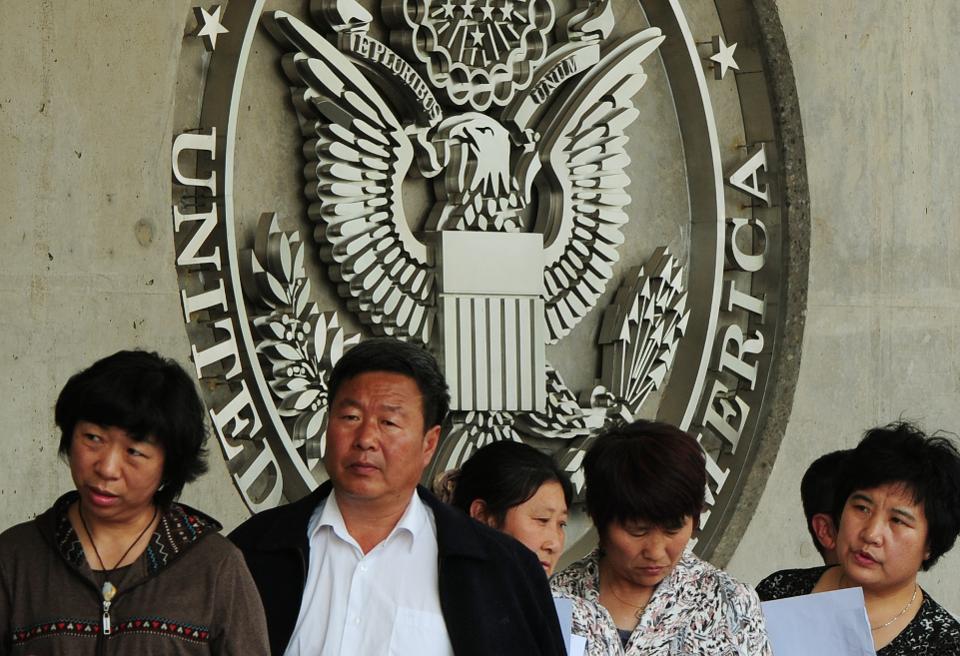The number of immigrants to the United States from China, India and Mexico declined sharply between FY 2016 and FY 2018. If current immigration policies continue, then further reductions from these and other major immigrant-sending countries to America are likely.
Recently released data from the Department of Homeland Security (DHS) show legal immigration declined by almost 87,000, by more than 7%, between FY 2016 and FY 2018. A National Foundation for American Policy (NFAP) analysis found, “Excluding refugees means 122,412 fewer legal immigrants became lawful permanent residents in FY 2018 than in FY 2016, a decline of 11.5%.” Refugees apply for and become permanent residents typically a year or more after physically arriving in the United States, meaning many of the refugees counted as obtaining permanent residence in the FY 2018 statistics were approved prior to the start of the Trump administration (which has admitted a low number of refugees).
Immigrants from the largest-sending countries showed the most significant declines in immigration to the United States. The number of immigrants from Mexico fell by 7.3%, from 174,534 in FY 2016 to 161,858 in FY 2018. Immigration from China decreased from 81,772 in FY 2016 to 65,214 in FY 2018, a drop of more than 20%.
The number of immigrants from South Korea fell by 4,125, or 18.9%, between FY 2016 and FY 2018. Immigration from Vietnam went from 41,451 in FY 2016 to 33,834 in FY 2018, a drop of 18.4%. Looking at other countries: Compared to FY 2016, immigration in FY 2018 declined by 7.5% from India, by 6.1% from the Dominican Republic and by 11.3% from the Philippines. While the number of individuals counted as new permanent residents also declined from Iraq and Burma, the number of refugees approved in prior years for these countries complicates the data.
What is responsible for the United States admitting fewer immigrants from these countries in FY 2018? The data show the U.S. government permitted fewer Americans to sponsor a spouse, child or parent for immigration. Spouses, children and parents are in a category called the Immediate Relatives of U.S. Citizens.
“Between FY 2016 and FY 2018, the number of Immediate Relatives of U.S. Citizens admitted from Mexico fell by 14,002 (11.7%), the Immediate Relatives of U.S. Citizens from China dropped by 7,636, or 24.1%, while family members in that category declined by 17% from the Dominican Republic, 24.1% from the Philippines, 14.8% from India, and 17.3% from South Korea,” concluded the National Foundation for American Policy.
Trump administration policies contributed to the lower immigration numbers. The smaller number of spouses, children and parents of U.S. citizens may reflect processing delays and policy changes that would prevent individuals from obtaining permanent residence, noted the NFAP report. One such policy change was the March 6, 2017, presidential directive on “heightened screening and vetting,” which, in its practical effect, attorneys say directed U.S. consular officers and U.S. Citizenship and Immigration Services (USCIS) adjudicators to find a reason not to approve an immigration application.
At U.S. consulates, determinations of visa ineligibility based on 221(g) grounds increased for individuals applying for immigrant visas from 254,478 in FY 2017 to 341,128 in FY 2018, a rise of 34% or 86,650. 221(g) is a type of catch-all denial used by consular officers and defined as when an “Application does not comply with provisions of the INA [Immigration and Nationality Act] or regulations issued pursuant thereto.”
Jeffrey Gorsky, senior counsel at Berry Appleman & Leiden LLP and former Chief of the Legal Advisory Opinion section of the Visa Office in the U.S. Department of State, said in an interview that many cases designated under 221(g) are placed into “administrative processing.” He noted that could encompass many situations, including cases where a consular officer may believe more documentation is required or if security clearances are requested. As a result, many cases won’t be cleared or approved in the same fiscal year, or may never be approved.
Read Also: Analysts Predict Rise In Inflation Rate To 12%
The “travel ban,” issued in the form of a presidential proclamation, has prevented individuals from immigrating to the U.S. from five majority-Muslim nations – Iran, Libya, Somalia, Syria and Yemen. While the proclamation allowed the possibility for issuing waivers, analysis finds immigration from the five countries decreased by 18,595, or 64.7%, between FY 2016 and FY 2018 (excluding refugees and asylees approved in earlier years).
Yemen saw the most significant drop, with the number of legal immigrants (excluding refugees and asylees) admitted from Yemen dropping from 12,906 in FY 2016 to 1,661 in FY 2018. Legal immigrants from Iran dropped from 10,187 in FY 2016 to 5,675 in FY 2018, while immigration (excluding refugees and asylees) also fell from Libya (down 16.4%), Somalia (a drop of 56.9%) and Syria (a decline of 51.2%). The White House may expand the travel ban to include more countries, according to the Associated Press.
Policies now blocked by the courts, such as the “public charge” rule and a presidential proclamation barring new immigrants from entering the U.S. without health insurance, could lead to much larger reductions in legal immigration. That means fewer immigrants from China, India, Mexico and elsewhere will be allowed to join their American citizen spouse or another close relative in the United States. In short, America will become a nation of fewer immigrants.\
FORBES

